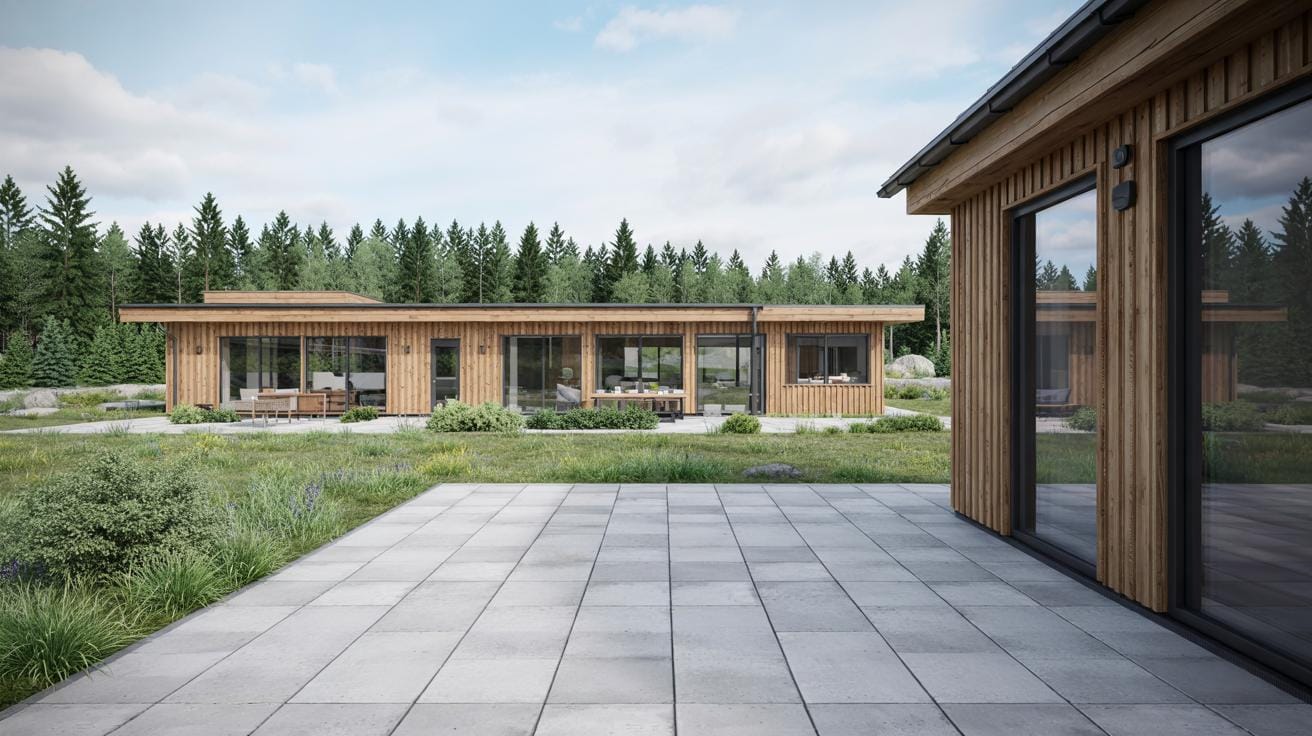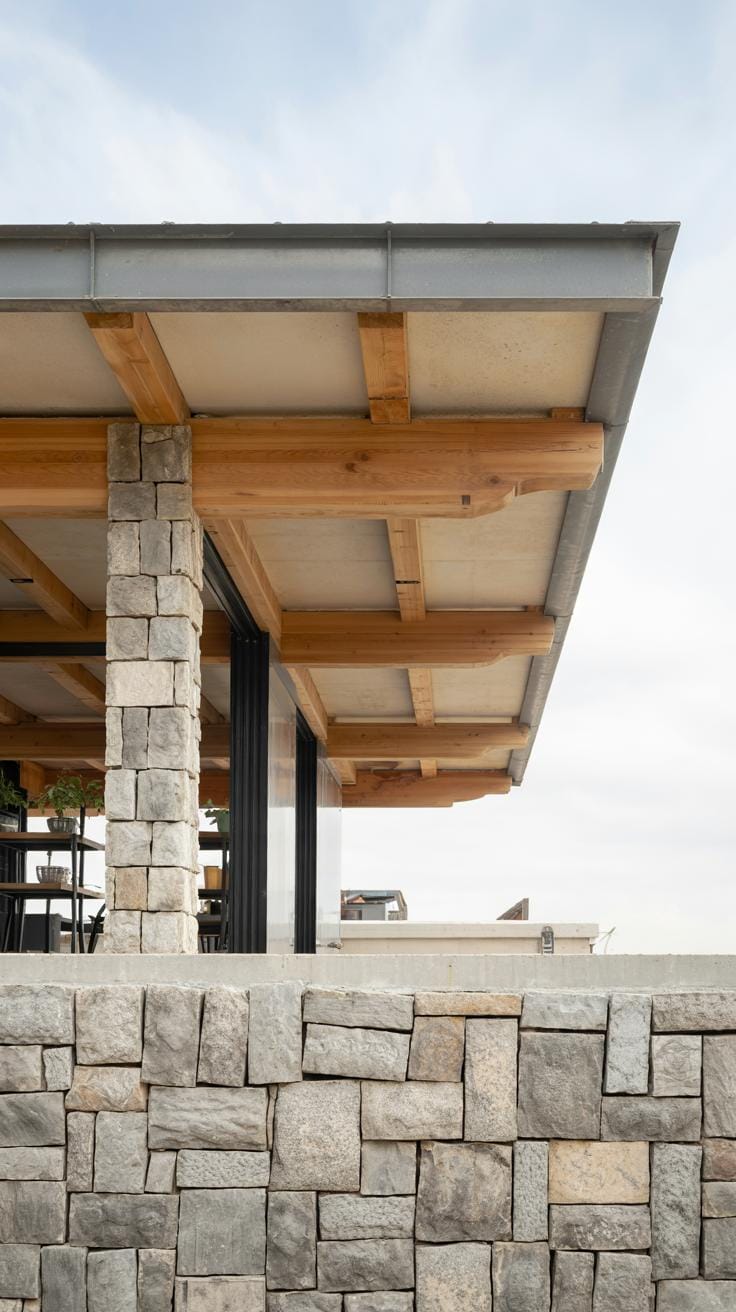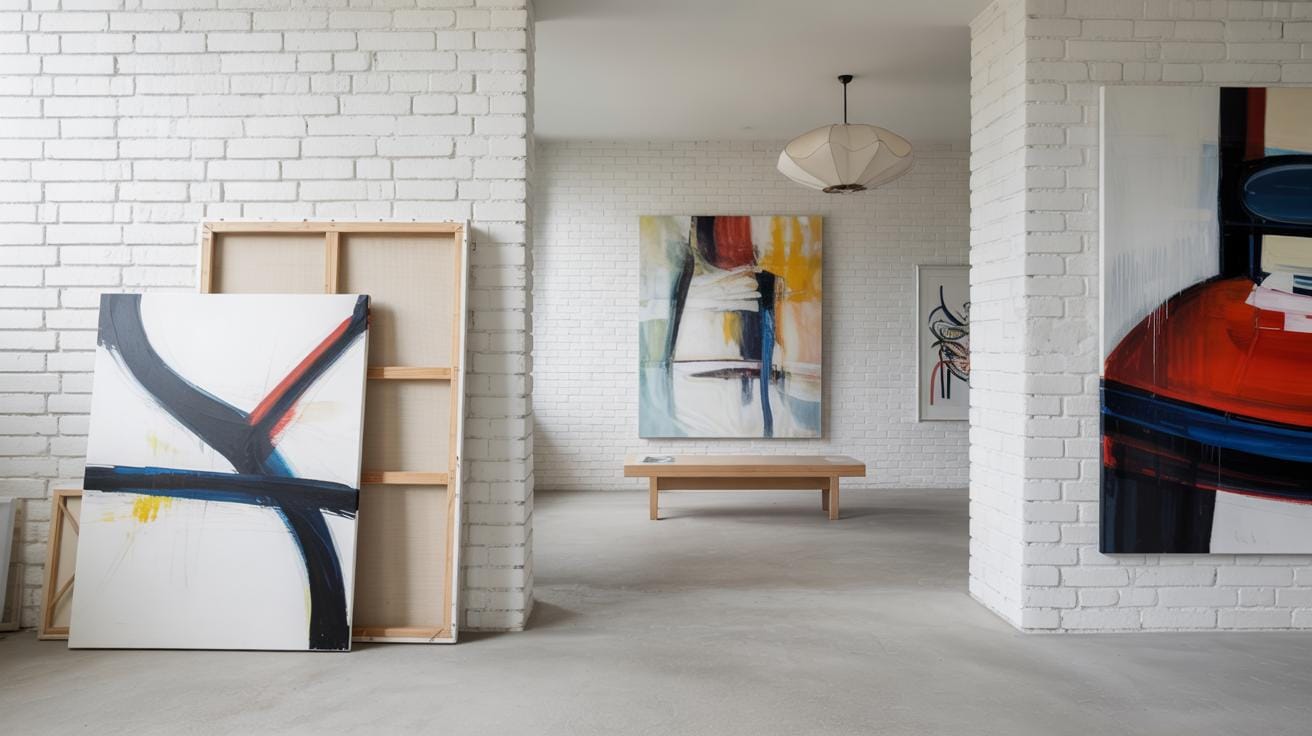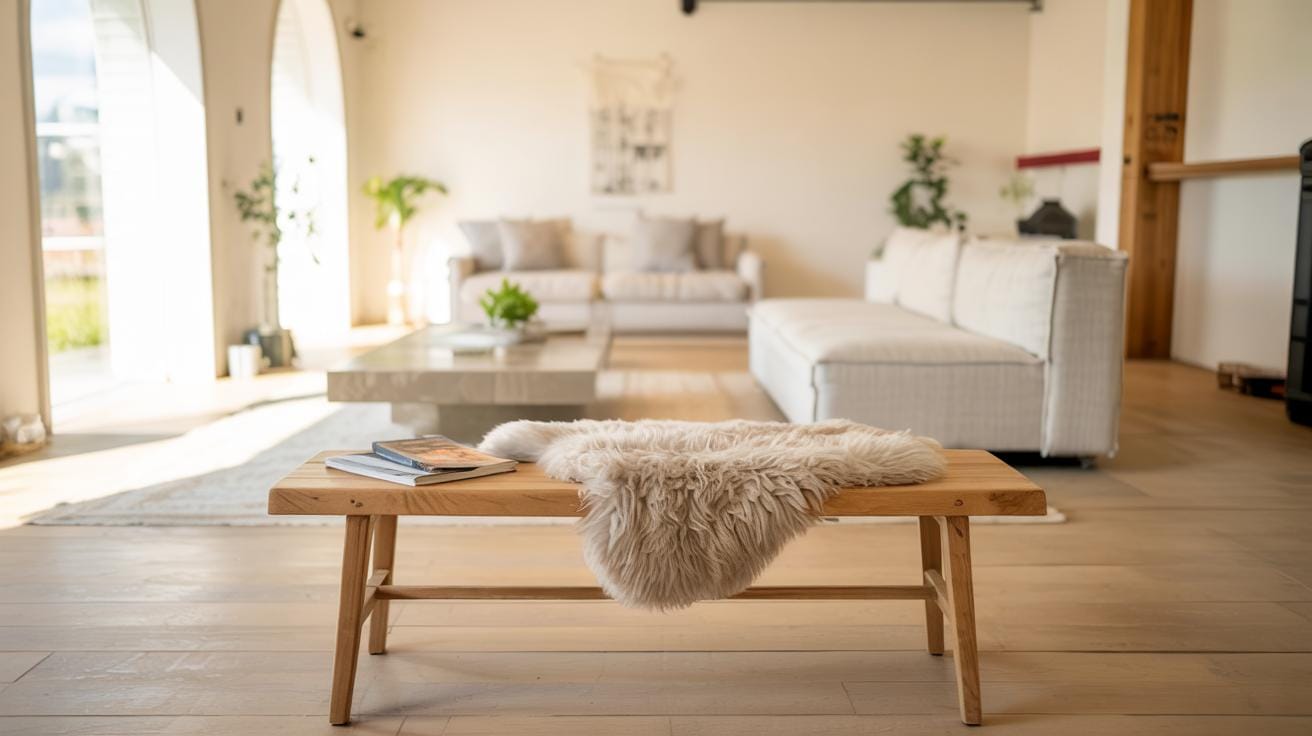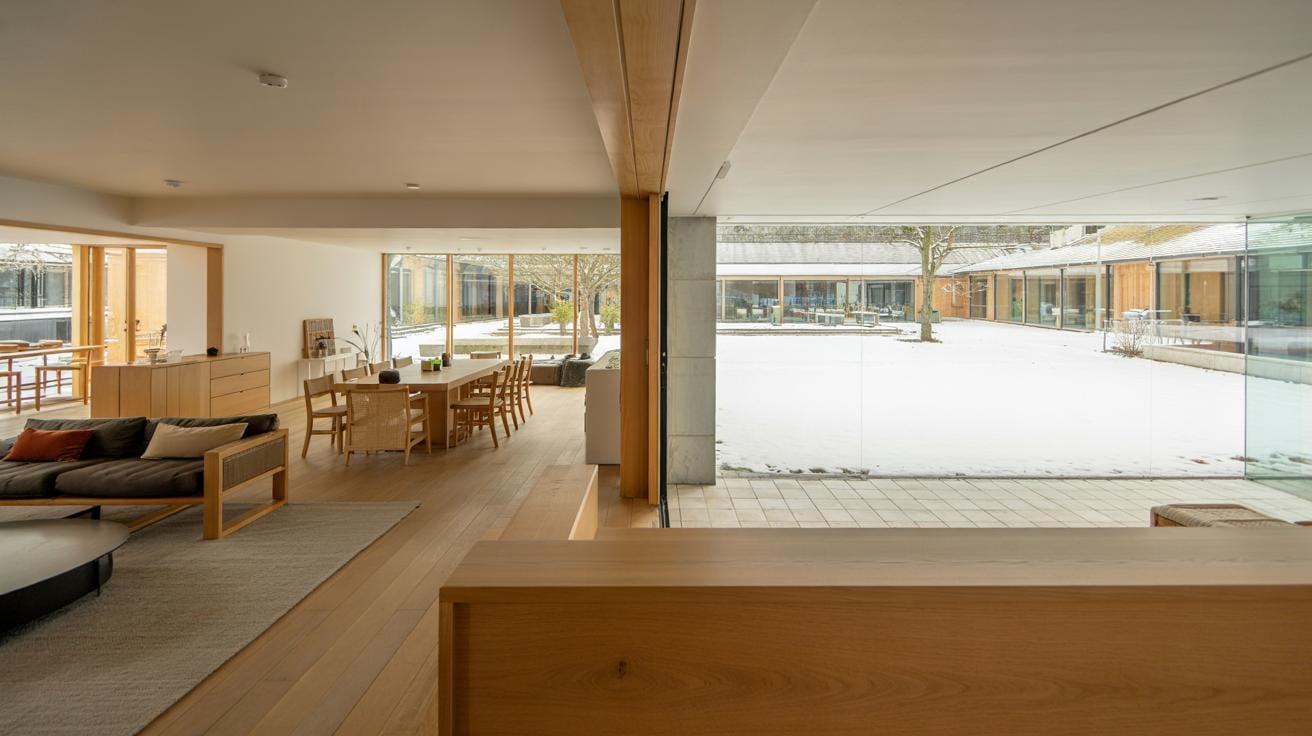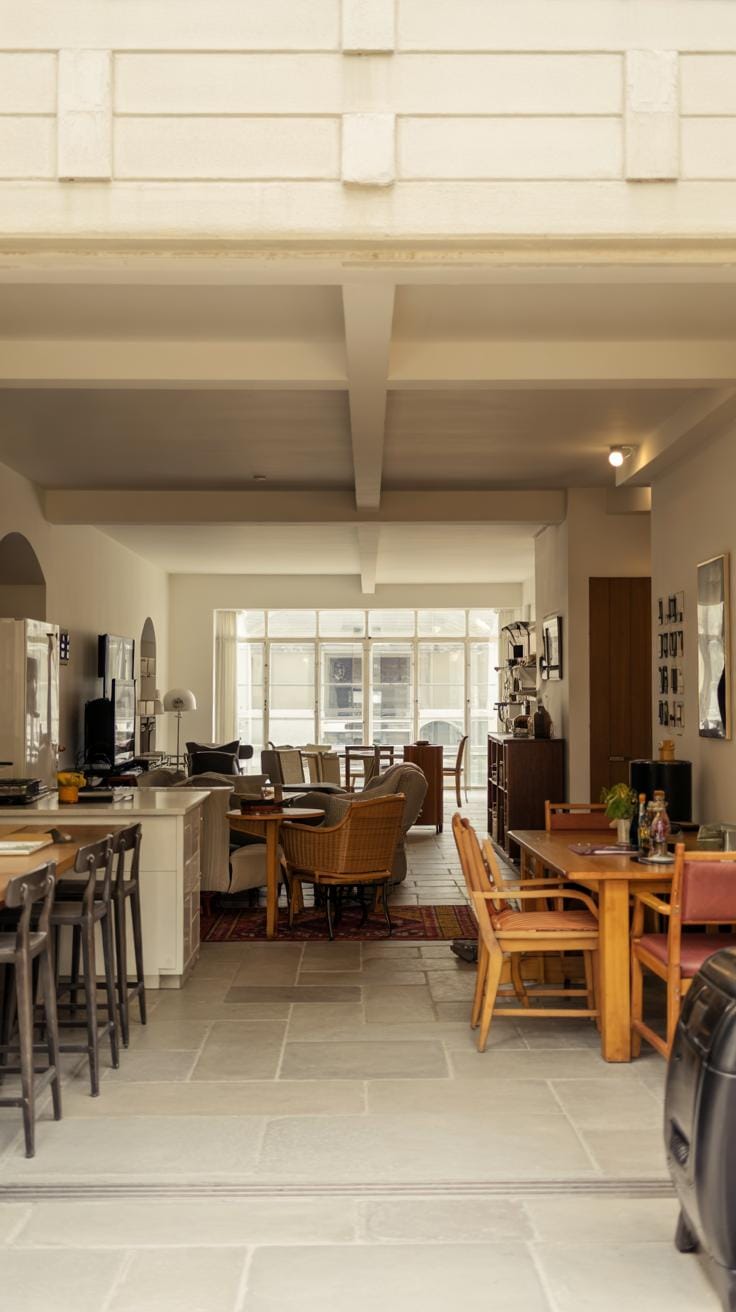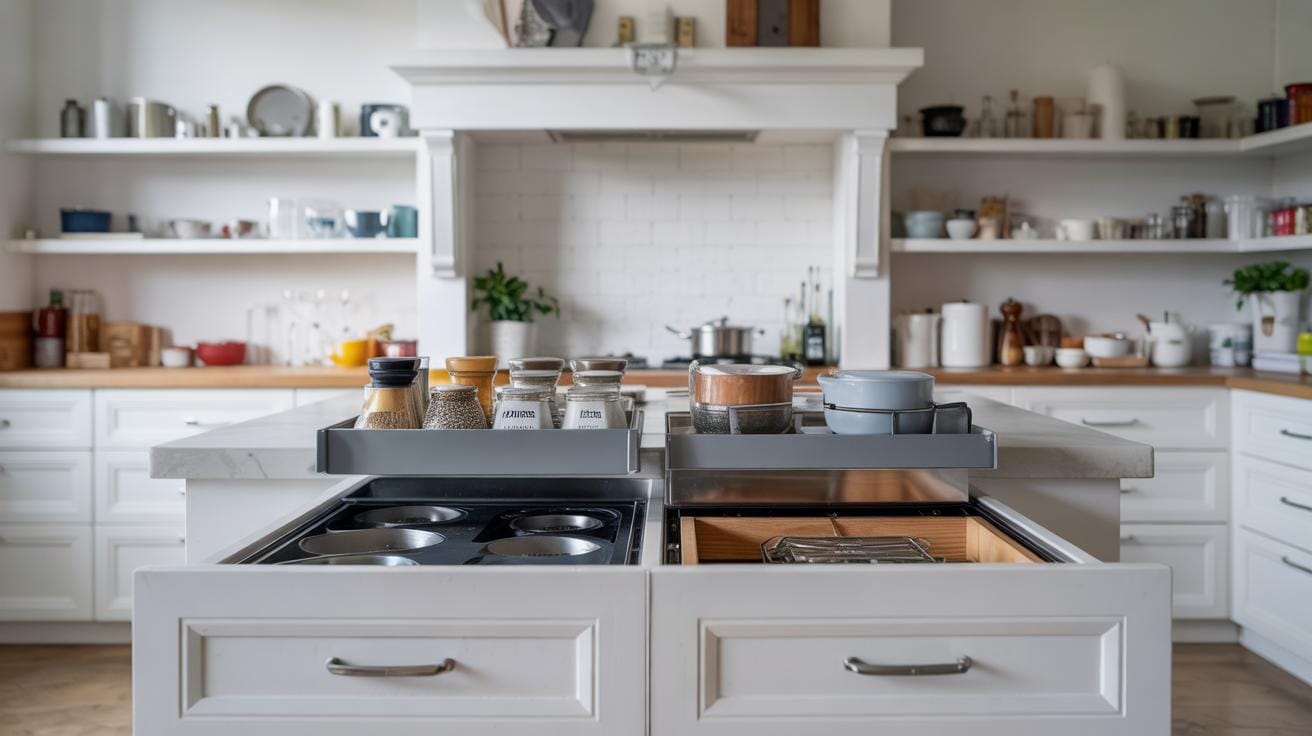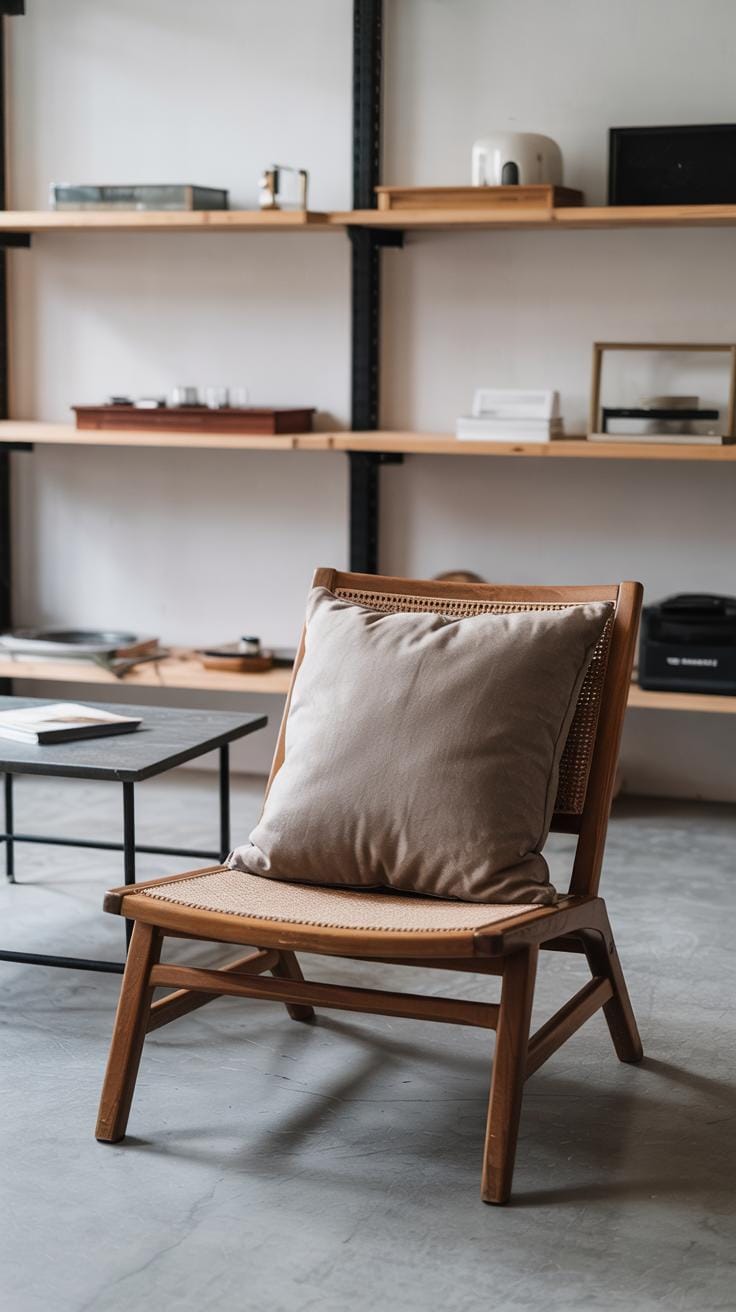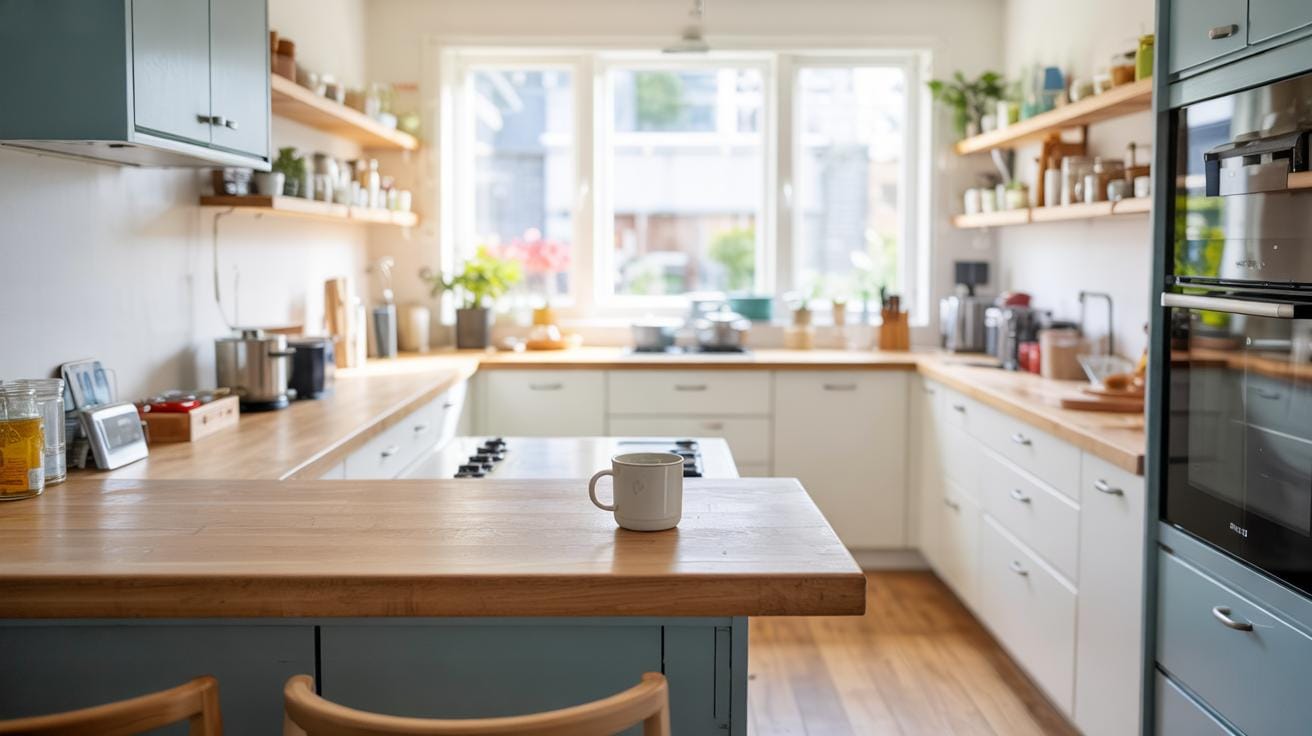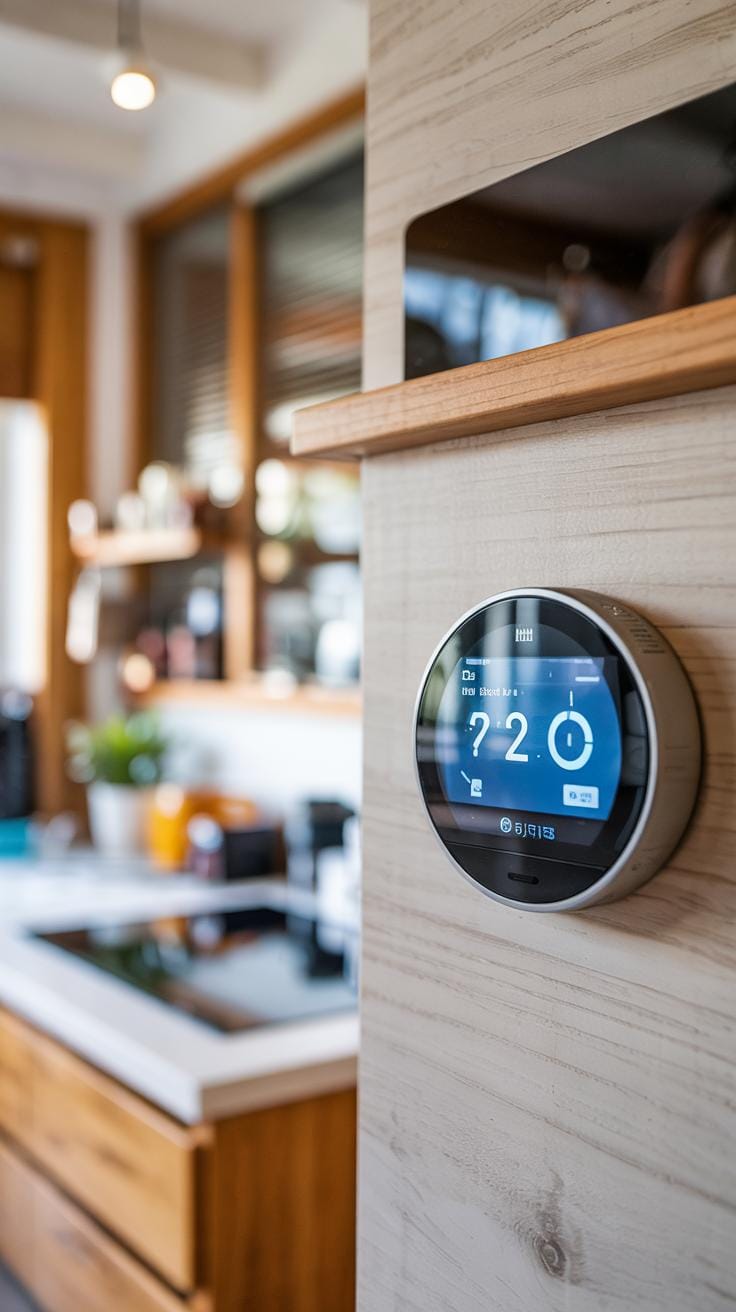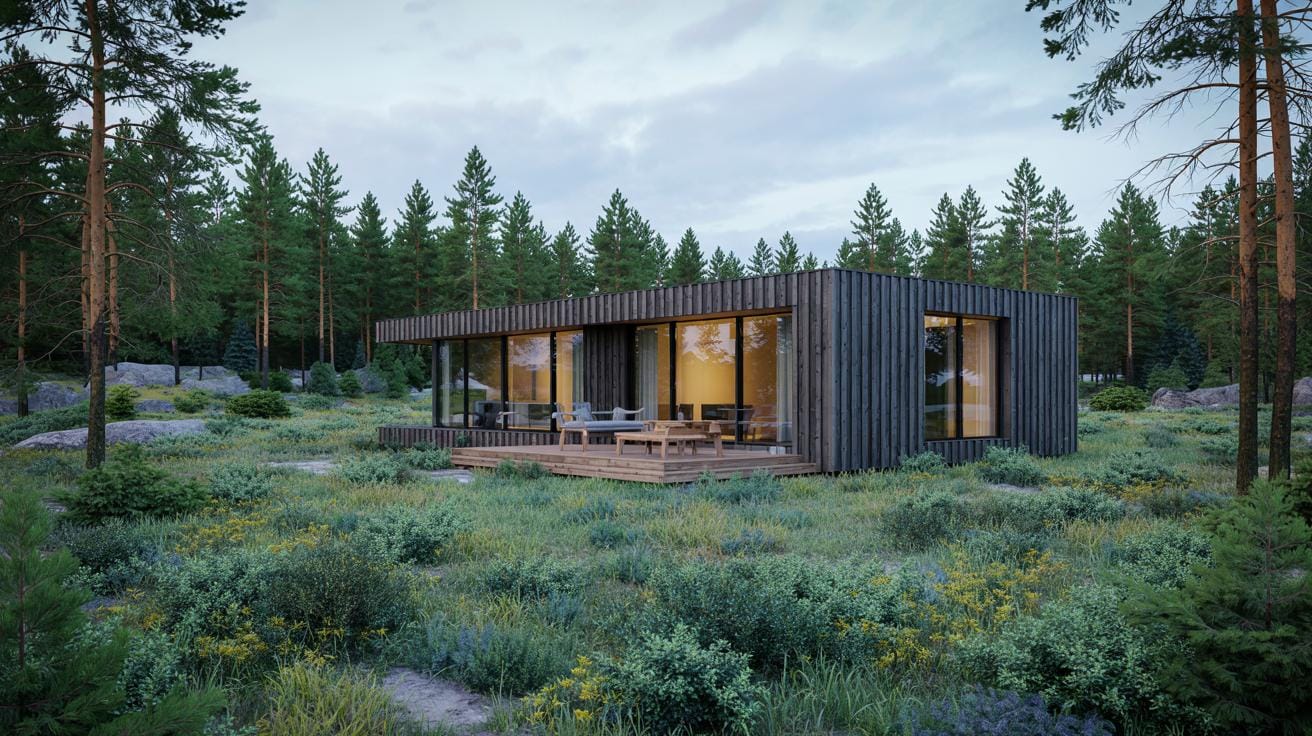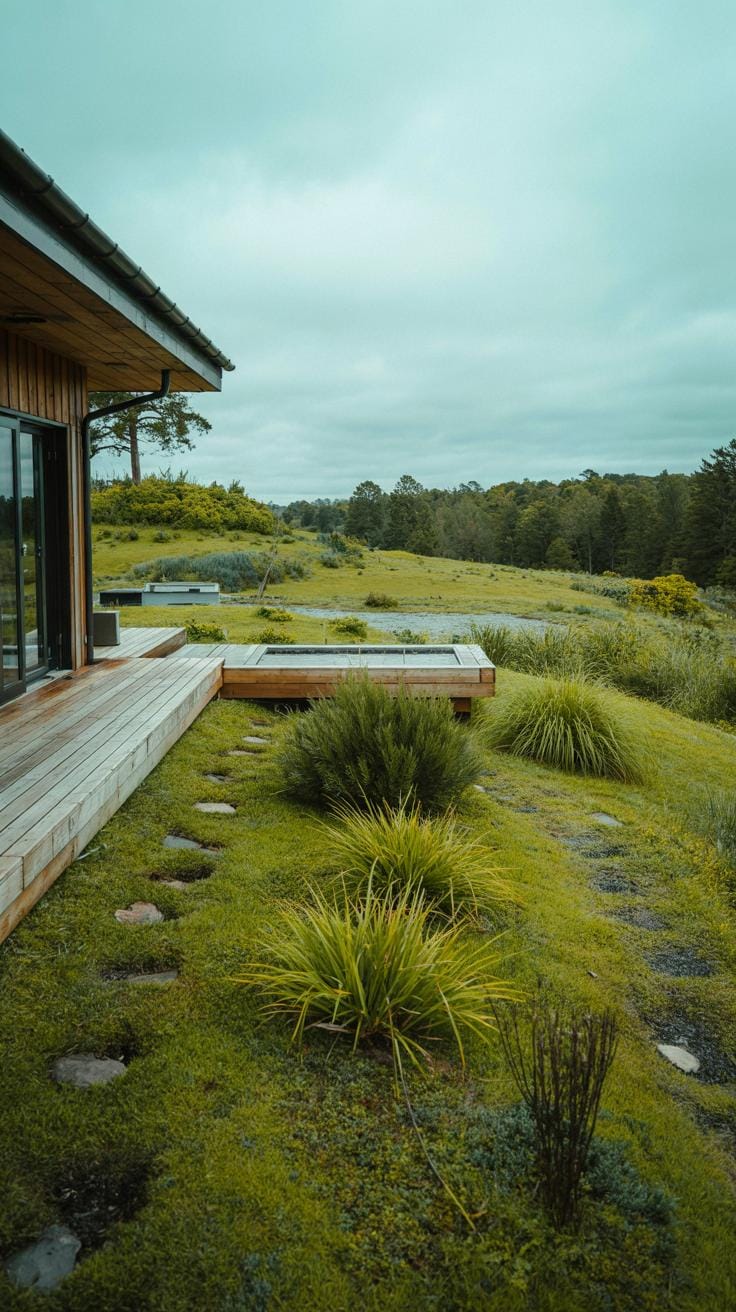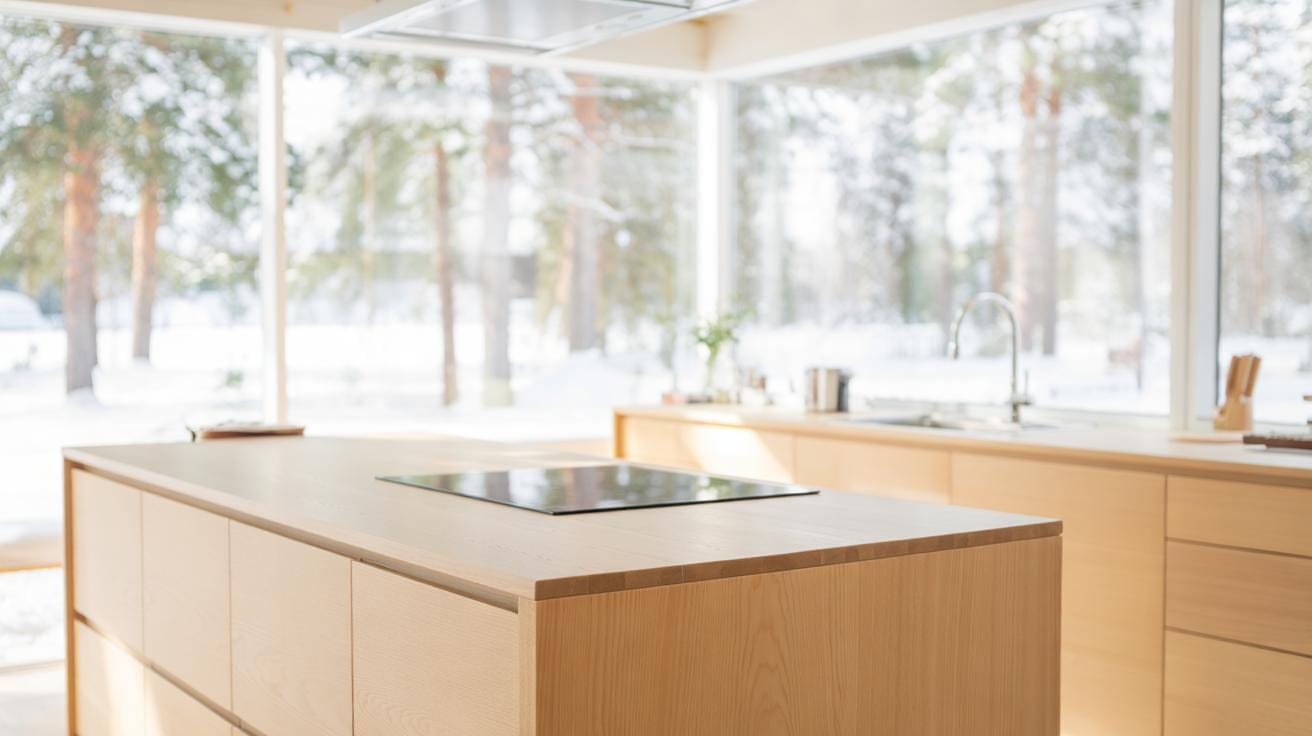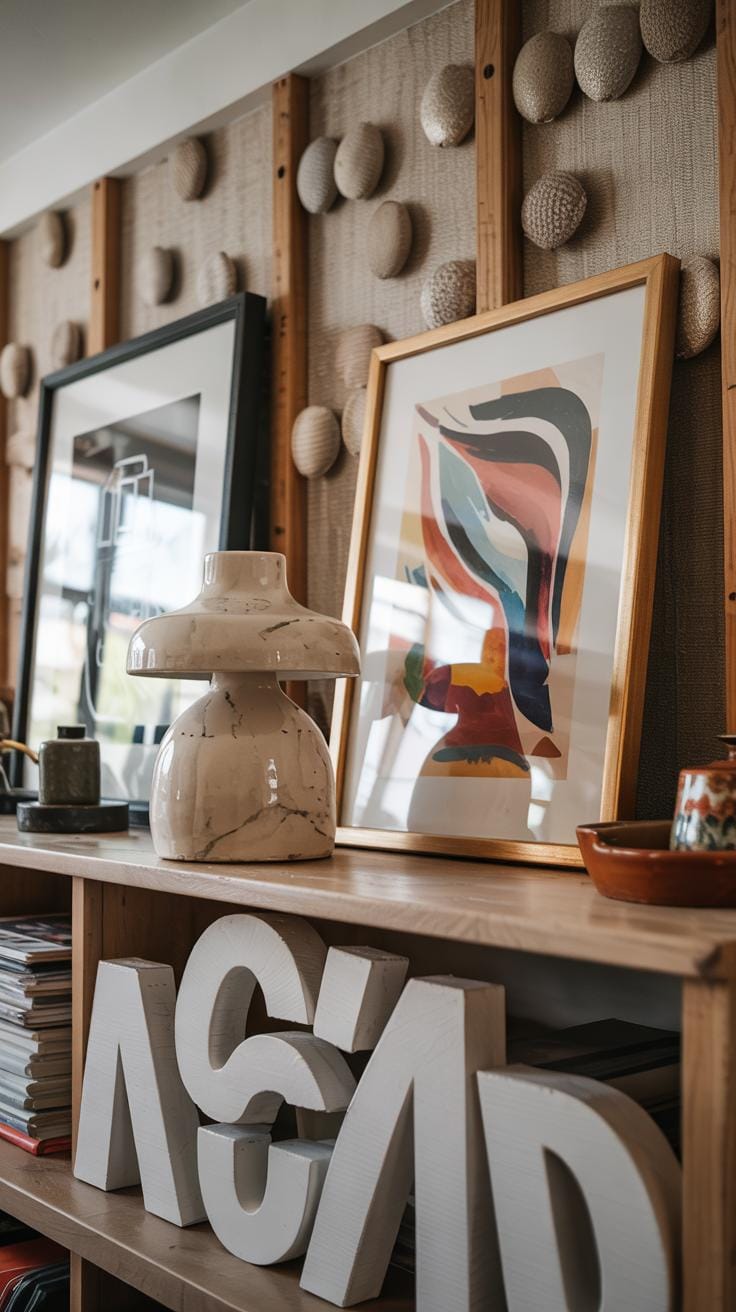Introduction
Scandinavian modern design is widely known for its simplicity, minimalism, and focus on functionality. Originating in the early 20th century across Nordic countries like Denmark, Finland, Norway, Sweden, and Iceland, it became a popular design movement in the 1950s. You will find this style not only in furniture and household items but extending to architecture and industrial design. The hallmark of this design is clean lines and an uncluttered look that emphasizes practicality without compromising style.
When designing a Scandinavian modern house, the core principles of this movement should guide your choices. By focusing on straightforward, functional spaces and limiting unnecessary decor, your home will feel both inviting and efficient. What makes a house truly Scandinavian modern? It combines light, natural materials and craftsmanship with innovative designs that suit modern living. This article explores practical and fresh ideas for creating your Scandinavian modern home.
Principles Behind Scandinavian Modern Architecture
The core of Scandinavian modern architecture lies in simplicity, minimalism, and functionality. These ideas guide every choice in designing homes that feel calm and practical. Simple shapes and clean lines create spaces free from clutter, making rooms inviting and easy to use. Using natural materials like wood, stone, and wool adds warmth while connecting the home to nature. Practical layouts prioritize comfort and efficiency. Each room serves a clear purpose, avoiding wasted space or unnecessary features. This design helps you live without distractions and focus on daily needs. When you design with these principles, your house feels balanced and welcoming, answering both aesthetic desires and everyday tasks.
Simplicity Shapes Design Decisions
Simplicity drives every aspect of Scandinavian modern design. Unneeded decoration is removed to leave only what matters most. This approach gives you calm, clear spaces that support your routine. Think of rooms without extra trim or ornamental details. Instead, focus on shapes, light, and materials that look natural and clean. Simplicity also means making choices that cut noise from your environment. You want your living space to look orderly and feel restful. How could reducing what you own or display change how you feel at home? When design is simple, it gives room for your life.
Functionality Meets Minimalism
Functional design works hand in hand with minimalism. Practical layouts and smart storage open up your rooms while keeping clutter out of sight. For example, built-in shelves or hidden cabinets help you organize without crowding space. Multipurpose furniture fits more than one need, like a bench with storage inside. These choices maximize space for daily living. The home feels larger and easier to move around in. Can you imagine a kitchen where every tool is within reach, yet surfaces stay clear? That’s how functionality supports minimalist style. Your home should work for you, not against you.
Lighting Strategies In Scandinavian Homes
Natural light shapes Scandinavian modern homes. The Nordic climate offers limited daylight in winter, so designs aim to capture every bit of sunshine. Your home’s layout should make light feel abundant and welcoming. Placing windows in key spots lets sunlight flow through rooms easily.
Light colors on walls and ceilings help reflect natural brightness. White or pale shades boost the light indoors and keep spaces feeling open. Using these colors keeps the home fresh even when dark skies linger outside.
Artificial lighting also plays a vital role during long winters. Well-planned light fixtures bring warmth and clarity without overwhelming the minimalist design. You want lighting that supports daily life while enhancing the quiet beauty of Scandinavian style.
Maximizing Daylight Entry
Design choices focus on pulling in natural daylight. Large windows are common in Scandinavian homes. They invite views and pull light deep inside. Skylights lift daylight into rooms where vertical windows can’t reach.
Consider your home’s orientation carefully. South-facing windows get the most sun throughout the day. This planning improves light quality and heat from the sun, reducing artificial light use and heating needs.
Glass doors and open floor plans can also help daylight travel between rooms. Are you making the most of the sun you receive in your design? This question guides window placement and size to brighten your home well.
Balancing Artificial Light
Lighting fixtures in Scandinavian homes combine function and clean design. Minimalist lamps blend smoothly with the simple interiors. They avoid clutter but still provide needed brightness.
Warm white LEDs work best here. They match the cozy feeling of natural wood and soft textiles common in this style. Layered lighting creates zones of light for different activities. Overhead lights, task lamps, and accent fixtures give control and versatility.
You can improve your home by choosing lighting that feels natural and enhances comfort. What kind of lighting makes you feel most relaxed and focused? Selecting fixtures with simplicity and warmth keeps the space true to Scandinavian values.
Material Choices For A Scandinavian Modern Home
Natural wood, stone, wool, and glass form the backbone of materials in Scandinavian modern homes. These materials fit the cold northern climate by providing warmth and insulation. Wood brings a natural feel while staying strong and durable. Stone adds solid surfaces that hold heat well. Wool offers cozy textiles that keep interiors inviting during harsh winters. Glass maximizes daylight, connecting indoor spaces to nature, and helps make rooms feel open and bright. You might wonder how these materials work together without overwhelming the simplicity Scandinavian design seeks. Each material balances the others, giving you clean lines paired with comfort. Choosing them carefully creates a timeless style that ages well and feels right for the environment.
Natural Wood Use In Architecture And Furniture
Wood shapes the structure and look of Scandinavian homes. Floors use light woods like pine and birch to add warmth underfoot. Walls and ceilings highlight wooden panels or beams, creating texture and softness without clutter. Furniture made from oak or ash stands strong and resists wear. These woods hold up well in cold, dry climates, preventing warping or cracking. Why choose these local types? They grow nearby, reducing transport impact, which fits sustainable values. If you want practical design, wood’s versatility means you can mix smooth finishes with raw textures. This keeps spaces interesting while staying true to Scandinavian principles of functionality and simplicity.
Incorporating Textiles And Stone
Stone surfaces, like granite or soapstone, work well for kitchen counters and fireplaces. They absorb heat and withstand heavy use. Wool, a traditional fiber in Nordic countries, softens rooms with rugs and cushions. This adds tactile layers that invite you to touch and relax. Wool’s natural thickness keeps cold out, improving comfort when paired with wood and stone. You might ask how to keep these elements from feeling cold or stark. Using varied textures in textiles and stone finishes breaks monotony and adds depth. This combination brings warmth to minimalist interiors, making them feel lived-in yet sleek.
Space Planning And Interior Layouts
Effective space planning in a Scandinavian modern house balances openness with function. Open floor plans create a sense of freedom and allow natural light to fill the space, which is key for homes in northern climates. Planning which areas stay open impacts how you experience the home daily. Living rooms, kitchens, and dining areas often merge to encourage social interaction and flexibility. Private rooms like bedrooms and bathrooms remain separate to ensure quiet and solitude.
Multipurpose rooms adapt to your changing needs without crowding the layout. A guest bedroom can double as a home office, or a playroom can transition into a workout space. Smart storage solutions keep belongings out of sight, supporting a clean and relaxed atmosphere. Furniture with built-in compartments and wall-mounted shelves help maintain the minimalist look while maximizing utility.
Open Floor Plan Benefits
Open layouts enhance the movement of light and air, making Scandinavian homes feel brighter and larger. Combining the kitchen, dining, and living areas allows you to engage with family and guests easily. This openness supports modern lifestyles that favor interaction over isolation. Separate bedrooms, bathrooms, and occasionally study niches provide necessary privacy. When considering your layout, ask yourself: which spaces benefit from openness, and where do you need calm and separation?
Smart Storage And Multipurpose Spaces
Hidden storage keeps rooms uncluttered and preserves the minimalist style typical of Scandinavian design. Think of benches with storage inside, under-bed drawers, and built-in closets that blend into walls. Use rooms flexibly to meet your daily demands. A dining table can double as a work desk; a fold-out sofa can serve as a guest bed. These approaches save space without sacrificing style or simplicity, ideal for both small homes and those that prioritize clean surfaces and order.
Furniture Design For Scandinavian Modern Living
Furniture in a Scandinavian modern home serves both form and function. Clean lines and natural materials like wood and leather create a calm, inviting space. Each piece fits smoothly into the open layouts and uncluttered environments typical of Scandinavian design. Shapes tend to be ergonomic, supporting comfort without adding bulk. For example, a simple wooden chair with a curved backrest provides support and looks elegant without overwhelming the room.
Durability plays a key role, too. Look for furniture built to last through everyday use and changing styles. This often means solid wood frames and high-quality upholstery. You don’t want your furniture to just fill space; it should enhance your daily life. How does your current furniture serve you? Could swapping heavy or oversized pieces for lighter, streamlined ones improve your comfort or space?
Iconic Scandinavian Furniture Styles
Designers such as Arne Jacobsen and Hans Wegner shaped what we recognize today as Scandinavian modern style. Jacobsen’s Egg chair blends sleek curves with cozy comfort, fitting perfectly in minimal or dramatic interiors. Wegner’s chairs, like the Wishbone chair, use bent wood to create graceful, lightweight seating. These pieces are more than just furniture; they represent a design philosophy focused on simplicity and usability.
The influence of these designs extends worldwide, inspiring countless modern furniture lines. When you bring a piece like Wegner’s into your home, you link to a tradition of craftsmanship that values both beauty and function. Which iconic design speaks to you? Could adding one signature piece change the feel of your space?
Choosing Functional And Comfortable Pieces
Selecting furniture for your Scandinavian home means thinking about function alongside style. Opt for pieces that feel lightweight to move, versatile enough to fit multiple uses, and built strong to withstand time. For example, modular sofas adapt to changing seating needs and fit various room sizes. Choose neutral colors and natural textures to keep a space feeling open and calm.
Comfort should never be sacrificed for style. Test chairs and sofas for support and coziness before buying. A practical piece blends well with your lifestyle, whether that means easy-clean fabrics for a busy home or stackable chairs for flexible dining. Would your furniture better suit your daily routines if it balanced simplicity with smart features?
Innovative Technologies To Enhance Modern Scandinavian Homes
Modern Scandinavian houses combine clean design with new technologies to boost sustainability, comfort, and convenience. You can maximize energy savings with efficient heating systems that reduce waste while keeping rooms warm and cozy. Integrating smart home systems allows you to control lighting, temperature, and security from your smartphone or voice assistant. This creates a seamless living experience while cutting down energy costs.
Sustainable materials play a big role. Wood from responsibly managed forests, recycled metals, and eco-friendly insulation help reduce environmental impact. Some homes use innovative composites that perform better in insulation and durability than traditional materials.
Imagine your home adjusting light levels automatically depending on outside brightness or your daily schedule. Think about setting heating to lower when you leave and rise before you return. These features make daily life easier and lower your footprint. How could these technologies change your routine or reduce energy waste in your home?
Energy Efficiency Solutions
Proper insulation is essential in colder Scandinavian climates to keep heat inside and cold out. Many modern homes use thick layers of natural wool, cellulose, or cork that breathe yet block drafts. These materials beat standard fiberglass in both comfort and eco-friendliness.
Heat recovery ventilation (HRV) systems push stale air out while bringing in fresh air and reclaiming heat from outgoing air. This keeps air quality high without wasting energy. It’s a smart way to balance ventilation and warmth.
Solar panels on roofs and walls convert sunlight into power to run heating, lighting, and appliances. Even in less sunny months, they help reduce reliance on grid electricity. Would you consider solar panels if they lowered your energy bill and fit into your home’s sleek design?
Smart Home Integration
Automated lighting systems adjust based on the time of day, movement, or natural light. This stops lights from running when not needed, saving energy and lowering costs. You can also set scenes to create moods with dimmed or colored lighting at the tap of a button.
Heating controls that learn your habits make sure the house is comfortable when you’re home but cool while you sleep or are away. Programmable thermostats and smart radiators reduce overuse without sacrificing warmth.
Security cameras, door locks, and alarms connected to your phone provide peace of mind. You can check in remotely and receive alerts about unusual activity. Smart tech simplifies managing your home, makes it safer, and cuts energy waste. How might you use smart tools to improve your daily comfort and security?
Outdoor Connection And Landscaping
A Scandinavian modern house thrives on its bond with nature. The design focuses on blending the indoors with the outdoors, inviting natural light and views inside. Large windows and doors open toward gardens and yards, creating a visual and physical link. You might wonder how to maintain this connection without overwhelming your outdoor space.
Keep landscaping minimal and thoughtful. Simple, clean lines and native plants fit well here, avoiding clutter while emphasizing the natural environment. Using materials like wood, stone, and gravel connects the home’s structure to the surroundings. When you plan your landscape, think about how each element flows effortlessly into your house through widely placed doors and windows.
Bringing Nature Close
Gardens, patios, and terraces designed in harmony with the house blur the line between built space and nature. You can make this happen by selecting local plants that require less care and thrive in your climate. For example, hardy grasses, shrubs, and wildflowers add texture and life without demanding constant upkeep.
Patios can use similar wood or stone as the floor inside, reinforcing unity between spaces. Arranging seating near plantings allows you to enjoy the outdoors comfortably. Think about how your family will use these spaces. Do you want a quiet reading nook or room for outdoor meals? Such choices help design practical, nature-integrated zones.
Creating Seamless Indoor Outdoor Flow
Sliding glass doors and large panels let you open your home wide to the fresh air. This feature creates a seamless flow that encourages moving between inside and outside freely. Overhangs and covered terraces protect openings from rain while letting in light, making outdoor spaces usable year-round.
When planning these connections, ask yourself if the transition feels natural. Does the flooring or ceiling extend beyond walls? Can you step out without obstacles? Keeping lines continuous and views clear brings cohesion and makes your home feel larger.
You will find that thoughtful design in these details enhances everyday living, creating a house that truly connects with its surroundings.
Color Palettes And Finishes In Scandinavian Modern Homes
Scandinavian modern homes lean on color palettes that promote calm and clarity. Neutral tones like whites, soft grays, and gentle earth tones cover walls, floors, and large furnishings. These shades help reflect natural light, making rooms appear more open and inviting.
White space plays a key role by giving your eyes a place to rest. It balances furniture and accessories without creating visual clutter. You can add small touches of muted colors or natural wood finishes to introduce warmth and depth.
Textiles and décor act as subtle accents. Think linen throws, wool rugs, or handwoven cushions in soft blues, dusty pinks, or moss green. These details invite texture and invite a comfortable, lived-in feeling without breaking the minimalist flow.
Neutral And Natural Color Foundations
Whites, grays, and earth tones form the backbone of Scandinavian interiors because they work well with northern light. These colors brighten dimmer winter months by reflecting light throughout the space. Your rooms feel fresh and airy, which improves mood and focus.
Natural hues connect indoor spaces to the outdoors, supporting the Scandinavian ideal of merging the home with nature. For instance, oak floors or stone countertops bring elements of the earth inside. You might notice how these colors create a balanced backdrop, allowing furniture and art to stand out naturally.
Using Accent Colors And Textures
Small pockets of color provide interest without cluttering a space. A deep blue throw pillow on a pale sofa or a muted green vase on a white shelf adds personality. You don’t need many accents; just enough to catch your eye and break monotony.
Texture plays a similar role. Combining smooth surfaces with rough wool, soft cotton, or carved wood makes rooms feel dynamic. Varying textures can make neutral walls and floors more engaging. When choosing accents, ask yourself which colors or materials will enhance calm rather than compete with it.
Customization And Personal Expression Within The Scandinavian Modern Style
Scandinavian modern design thrives on simplicity and function, but that doesn’t mean your space can’t reflect who you are. Personal touches can blend seamlessly with clean lines and minimalism when chosen carefully. Artworks that speak to your taste can introduce warmth without cluttering the space.
Handmade objects offer a unique story and texture that machines can’t replicate. Simple pottery, woven baskets, or hand-carved wooden pieces add subtle character while maintaining a natural feel. You can also consider customizing furniture to fit your daily routines and spatial needs, ensuring that each piece serves a purpose.
How can you use your belongings to tell your story without straying from Scandinavian ideals? Focus on quality over quantity. Select pieces that show craftsmanship and have meaning. This way, your home stays both practical and personal.
Incorporating Art And Handmade Elements
Your choice of art can give a room personality but still honor simplicity. Choose pieces with limited color palettes or abstract designs that don’t overwhelm. A single large painting or a small curated gallery wall works well.
Handmade crafts can bring warmth. Think about ceramic vases or woven textiles from local artists. These items add texture and life without overloading visual space. Handmade objects offer a connection to tradition or your own story.
Would you rather show a collection or highlight one special piece? Keeping display areas tidy and uncluttered helps preserve the Scandinavian focus on calm and order.
Tailoring Furniture And Layouts To Your Needs
Furniture in Scandinavian homes often follows clean and simple shapes, but you can tailor those shapes to your lifestyle. Built-in benches with storage, adjustable shelving, or multi-use tables allow for flexibility and keep rooms practical.
Custom pieces can fit your proportions or specific activities. A desk designed for your work style or a sofa scaled to your room’s size enhances comfort and efficiency. Materials like light woods and natural fabrics maintain the style’s visual lightness.
How can your furniture serve your daily habits without adding distraction? Focus on form that supports function and adds a quiet personal stamp. Tailoring layout and scale creates rooms where living feels intuitive and unique to you.
Conclusions
Your Scandinavian modern house reflects a balance between form and function. The guiding principles of this style help create living spaces that are neat, naturally bright, and useful. Incorporate natural materials like wood and stone, keep lines clean, and choose neutral colors to build a serene atmosphere. By focusing on furniture and layouts that serve everyday needs, you avoid clutter and enhance comfort.
The innovative concepts for a Scandinavian modern house discussed here focus on making your home simple yet modern and efficient. You control how space, light, and materials come together to suit your lifestyle. Consider how these ideas fit your home design goals. Are you ready to bring clarity and calm into your living space using these proven design strategies? This approach can transform your house into a modern Norwegian, Swedish, Finnish, or Danish inspired haven.

